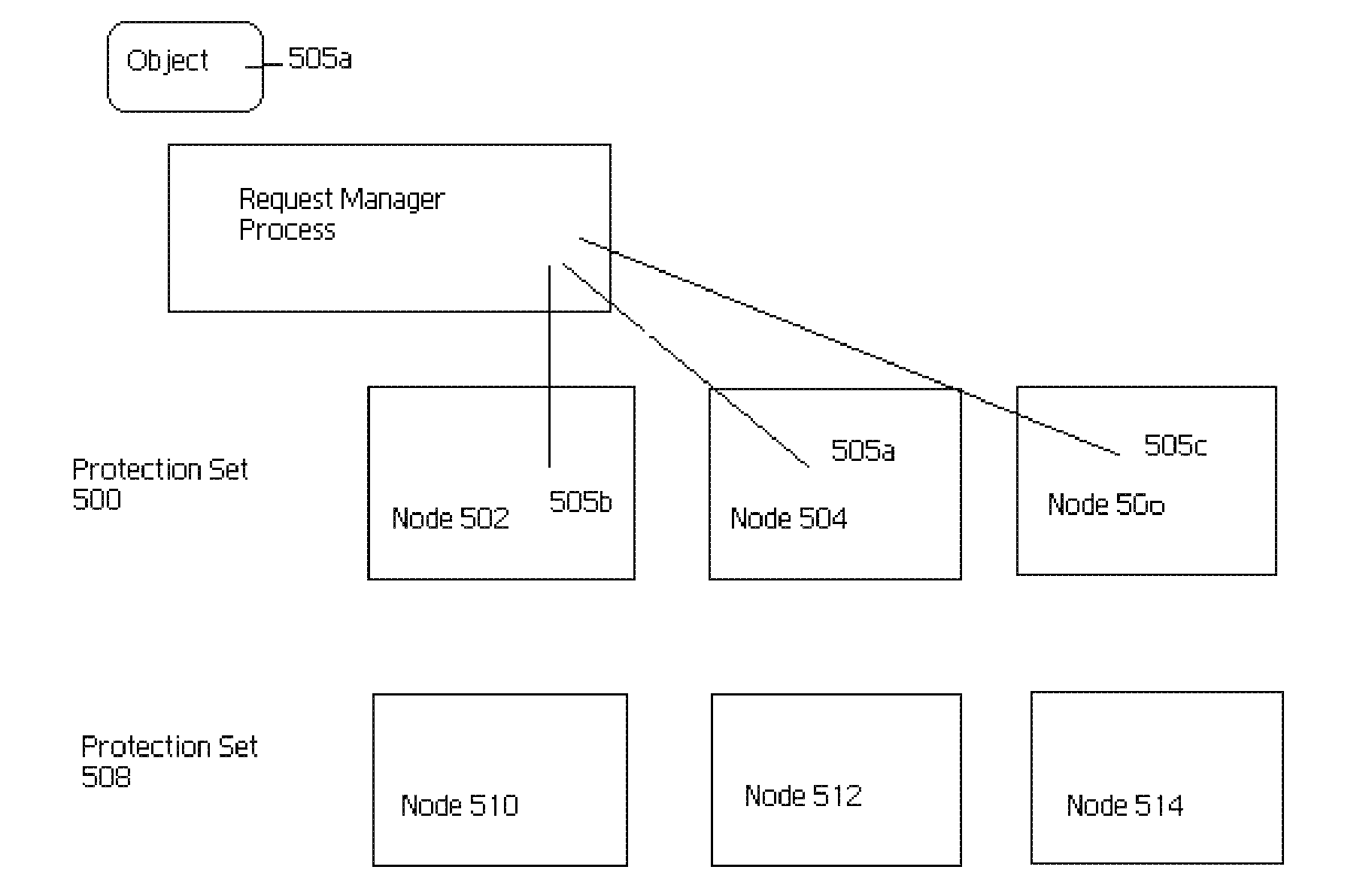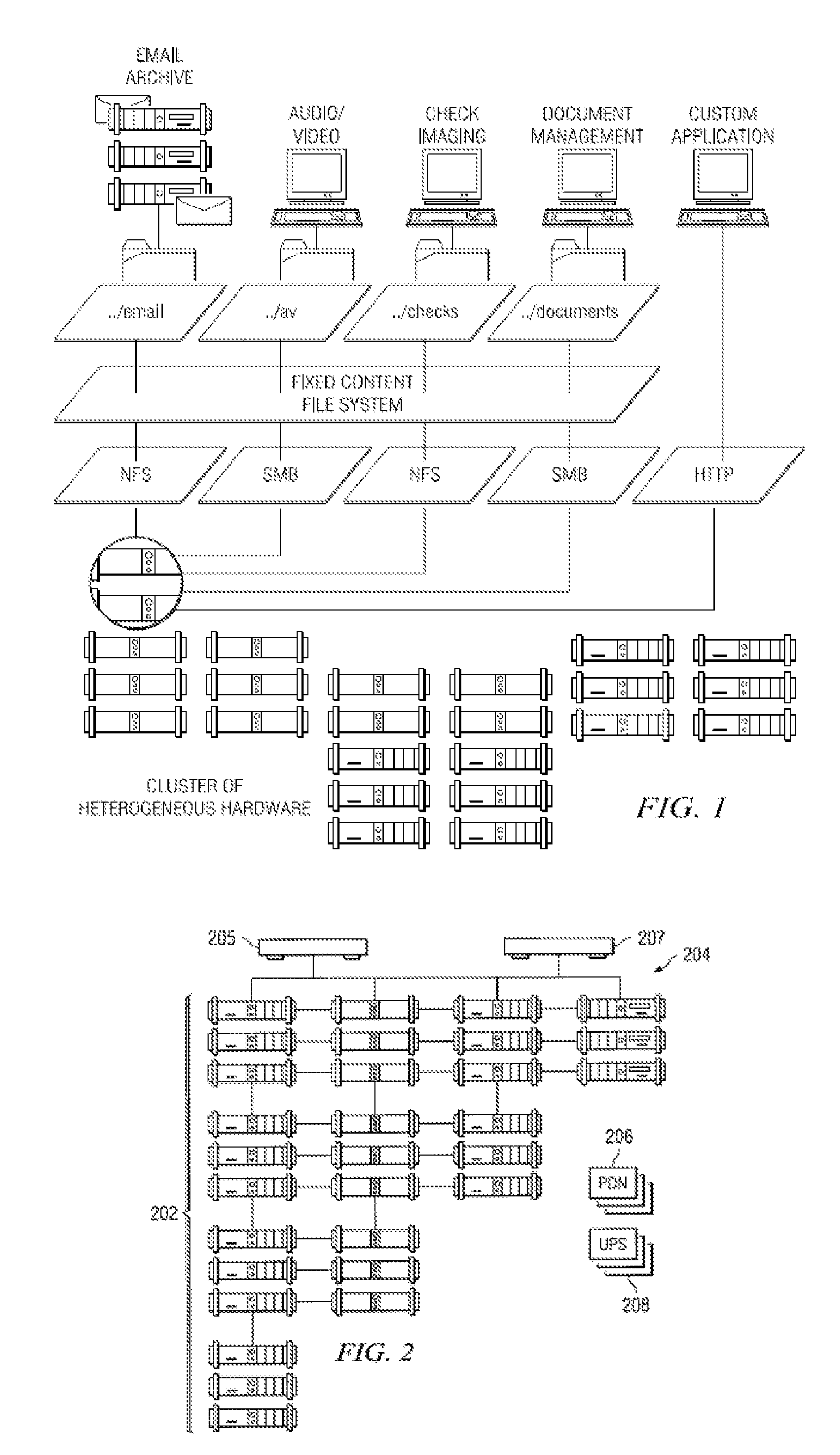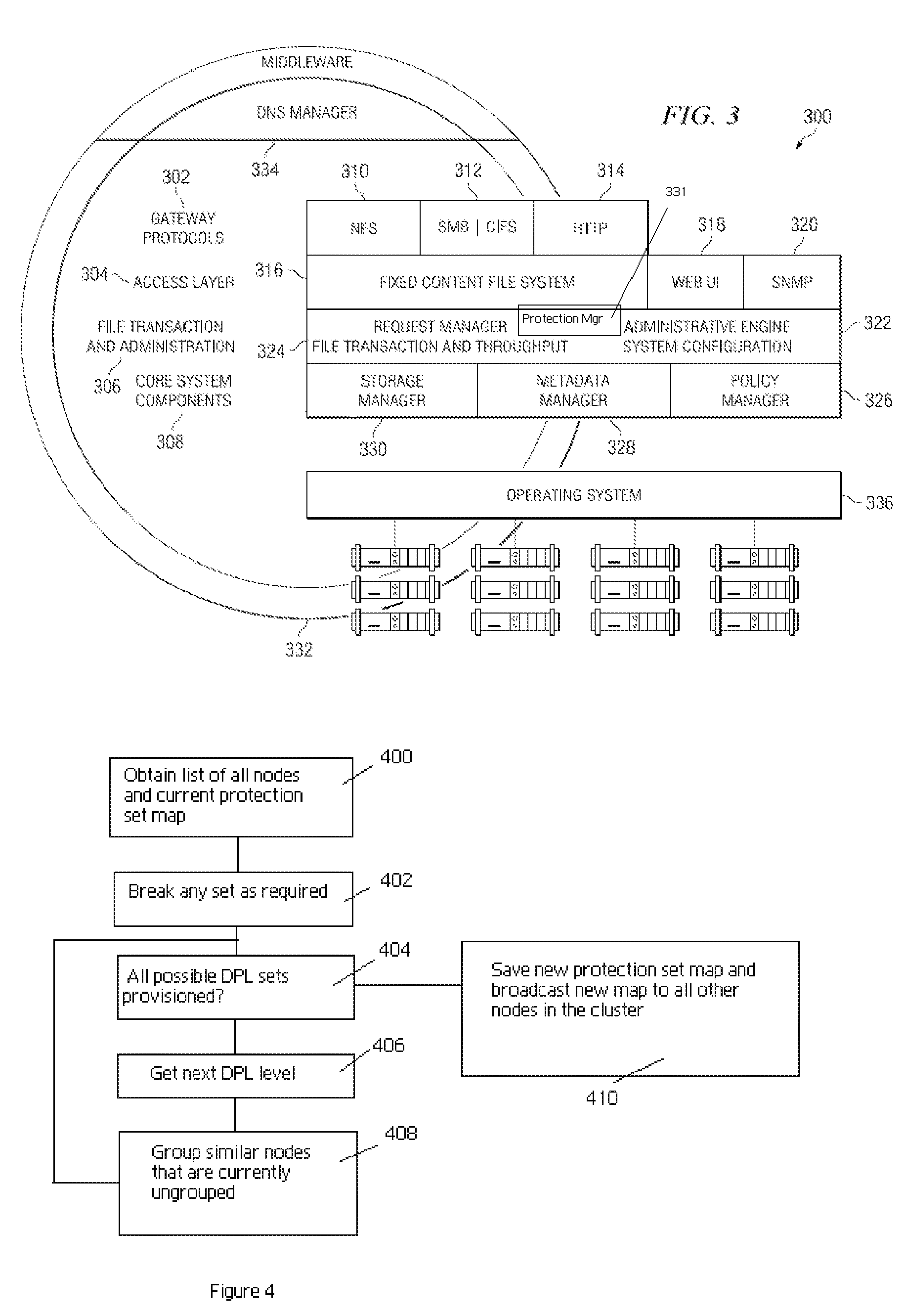Method for improving mean time to data loss (MTDL) in a fixed content distributed data storage
a distributed data storage and fixed content technology, applied in data switching networks, frequency-division multiplexes, instruments, etc., can solve problems such as reducing data loss, and achieve the effect of improving a mean time to data loss and reducing data loss
- Summary
- Abstract
- Description
- Claims
- Application Information
AI Technical Summary
Benefits of technology
Problems solved by technology
Method used
Image
Examples
Embodiment Construction
[0023]As, in FIG. 2, an illustrative cluster in which the present invention is implemented preferably comprises the following general categories of components: nodes 202, a pair of network switches 204, power distribution units (PDUs) 206, and uninterruptible power supplies (UPSs) 208. A node 202 typically comprises one or more commodity servers and contains a CPU (e.g., Intel x86, suitable random access memory (RAM), one or more hard drives (e.g., standard IDE / SATA, SCSI, or the like), and two or more network interface (NIC) cards. A typical node is a 2U rack mounted unit with a 2.4 GHz chip, 512 MB RAM, and six (6) 200 GB hard drives. This is not a limitation, however. The network switches 204 typically comprise an internal switch 205 that enables peer-to-peer communication between nodes, and an external switch 207 that allows extra-cluster access to each node. Each switch requires enough ports to handle all potential nodes in a cluster. Ethernet or GigE switches may be used for t...
PUM
 Login to View More
Login to View More Abstract
Description
Claims
Application Information
 Login to View More
Login to View More - R&D
- Intellectual Property
- Life Sciences
- Materials
- Tech Scout
- Unparalleled Data Quality
- Higher Quality Content
- 60% Fewer Hallucinations
Browse by: Latest US Patents, China's latest patents, Technical Efficacy Thesaurus, Application Domain, Technology Topic, Popular Technical Reports.
© 2025 PatSnap. All rights reserved.Legal|Privacy policy|Modern Slavery Act Transparency Statement|Sitemap|About US| Contact US: help@patsnap.com



